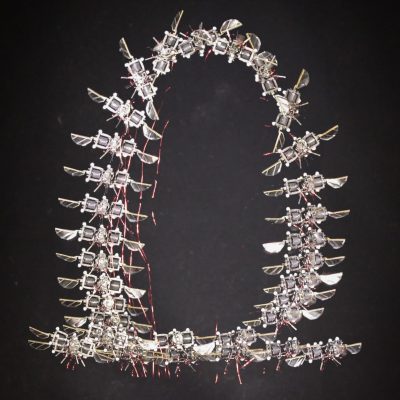
Mission-driven space scholar Chloé Gentgen sets her sights high
AeroAstro PhD student hopes to formulate and eventually lead a robotic mission to the outer solar system
IN THE STAR TREK TV SERIES, SPACE IS CALLED THE “FINAL FRONTIER,” but to Chloé Gentgen SM ’22, a PhD student in the MIT Department of Aeronautics and Astronautics (AeroAstro) and a MathWorks Fellow, space is the first and only frontier. As an intern at NASA’s Jet Propulsion Laboratory last summer, Gentgen was part of a team charged with designing a mission to explore Enceladus, a moon of Saturn that holds special scientific interest due to the massive geysers spewing forth from its subsurface ocean.
Gentgen’s ultimate goal is to someday lead such an endeavor—and she is well on her way. In 2022, she headed the winning team in the NASA-sponsored Revolutionary Aerospace Systems Concepts-Academic Linkage (RASC-AL) competition. Alongside fellow MIT students, she designed a plan for extracting oxygen from the Martian atmosphere and water from the planet’s underground ice reserves to produce 50 tons of rocket fuel each year. That same year, Gentgen was one of “20 students in their twenties” honored by Aviation Week Network as premier up-and-coming talents in aerospace.
The allure of systems thinking
Gentgen began her formal studies in the space field in 2020, entering MIT as a graduate student after completing her undergraduate work at CentraleSupélec, University of Paris-Saclay, in her native France. Seeing unique opportunities in aerospace engineering in the United States, Gentgen was particularly drawn to MIT because of the Institute’s strong programs in systems engineering, an approach that involves viewing systems and their interactions as a whole rather than focusing on individual components such as propulsion, guidance and control, and celestial mechanics. That perspective is appealing, she says, “because I am interested in all of these areas. And with the world getting more and more complex, systems thinking is sure to become increasingly important.”
Gentgen analyzed possible architectures and propulsion systems for small satellites and tried to arrive at optimal design choices. She joined MIT’s student team for the 2021 RASC-AL design competition and helped design a crewed mission to Ceres, the largest object in the asteroid belt, located between Mars and Jupiter. The team demonstrated that astronauts could be supported on Ceres for two months while studying the dwarf planet’s mineral and water resources. Such a mission would be conducted to learn more about this intriguing object and see whether Ceres could be a useful waystation en route to explorations of points beyond.
With her master’s thesis now complete, Gentgen has established the first goal of her PhD work: to design an exciting research project. She knows for certain that the project will involve mission architecture, and she hopes that others in her community will share her enthusiasm in planning a future mission. Gentgen will be using some of the methodologies routinely employed in AeroAstro’s Engineering Systems Lab headed by her thesis supervisor, Olivier de Weck SM ’99, PhD ’01, the Apollo Program Professor of astronautics and engineering systems. “We’ve developed a logistical way of viewing a mission—strategies for driving down costs, using resources efficiently, refueling in orbit, and the like,” she explains.
To determine what scientists will want to do in the future, Gentgen is currently studying important missions of the past, consulting with experts in the field, and reviewing key reports like the planetary science decadal surveys (produced by the National Research Council), as well as assessing potential uses of new technology. “You don’t become the leader of a mission overnight,” she acknowledges. “You have to work up to it.”
Gentgen’s ultimate goal is to formulate and eventually lead a robotic mission to the outer solar system—the realm of planets, dwarf planets, moons, asteroids, and meteoroids lying beyond Mars. She recognizes that to make that goal a reality, she will need to take on different roles on other missions, familiarizing herself with all phases of development. Although the outer solar system holds a special allure for her, she says with a grin, “I would not be opposed to a Mars mission.”

